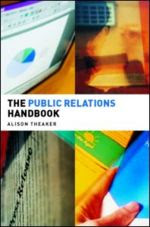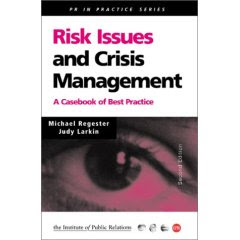
Evidently, PR is still an overwhelmingly ‘women’s profession,’ with far too few men according to recent surveys by CIPR. It is unlikely that the trend will change as the vast majority of PR university students and new entrants to the PR profession are female. The question as to why there are so women are dominating the profession can be explained by a few theories.
First, PR is still perceived to be a ‘girlie kind’ of profession. Most people still associate PR to fashion and glamour and thus a more ‘girlie’ like profession. The media has perhaps had a role in influencing this perception. The filming of programmes such as Sex and The City where one of the characters Samantha Brown acts as a PR Consultant has also largely influenced the perception of the industry. In the programme Samantha is involved in managing glamorous events, hosting parties and generally carrying out more outdoor entertainment activities.
According to a report by the IC Network in Birmingham (2004) the flexibility in the profession has enabled women to become freelancers. This means it provides the opportunity for career-minded women to have it all in terms of high powered jobs, while still balancing family life.
The genetic make up of women also enables them to be better in PR than men. The report cites that women tend to be more practical than theoretical, particularly when it comes to attention to detail, which are critical success factors behind award-winning PR campaigns. Women are better than men at thinking on different levels all at the same time. The report also argues that ‘women are better listeners, more methodical in their decisions, less confrontational and less likely to go off in unproven directions.’
According to Gideon Freeman, editor of PR Week, ‘PR is all about developing relationships and bringing influence to bear, which historically women have always mastered better than men.’
However as women dominate PR; the few men in the profession continue to dominate the top positions. This is particularly true according to CIPR, among the large London-based agencies, where a major proportion of directors and chief executives are male and continue to seize the high ground, having worked their way up through the industry since their domination during the 1980s.
Men also tend to work longer hours than women. Faced with challenges such as childcare and maternity leaves women are likely to be placed in less serious positions and employers are more likely to pick men to hold top positions.
Finally women are also more willing to take up administrative roles initially and work their way up which means it takes longer for them to get to the top.
First, PR is still perceived to be a ‘girlie kind’ of profession. Most people still associate PR to fashion and glamour and thus a more ‘girlie’ like profession. The media has perhaps had a role in influencing this perception. The filming of programmes such as Sex and The City where one of the characters Samantha Brown acts as a PR Consultant has also largely influenced the perception of the industry. In the programme Samantha is involved in managing glamorous events, hosting parties and generally carrying out more outdoor entertainment activities.
According to a report by the IC Network in Birmingham (2004) the flexibility in the profession has enabled women to become freelancers. This means it provides the opportunity for career-minded women to have it all in terms of high powered jobs, while still balancing family life.
The genetic make up of women also enables them to be better in PR than men. The report cites that women tend to be more practical than theoretical, particularly when it comes to attention to detail, which are critical success factors behind award-winning PR campaigns. Women are better than men at thinking on different levels all at the same time. The report also argues that ‘women are better listeners, more methodical in their decisions, less confrontational and less likely to go off in unproven directions.’
According to Gideon Freeman, editor of PR Week, ‘PR is all about developing relationships and bringing influence to bear, which historically women have always mastered better than men.’
However as women dominate PR; the few men in the profession continue to dominate the top positions. This is particularly true according to CIPR, among the large London-based agencies, where a major proportion of directors and chief executives are male and continue to seize the high ground, having worked their way up through the industry since their domination during the 1980s.
Men also tend to work longer hours than women. Faced with challenges such as childcare and maternity leaves women are likely to be placed in less serious positions and employers are more likely to pick men to hold top positions.
Finally women are also more willing to take up administrative roles initially and work their way up which means it takes longer for them to get to the top.





No comments:
Post a Comment